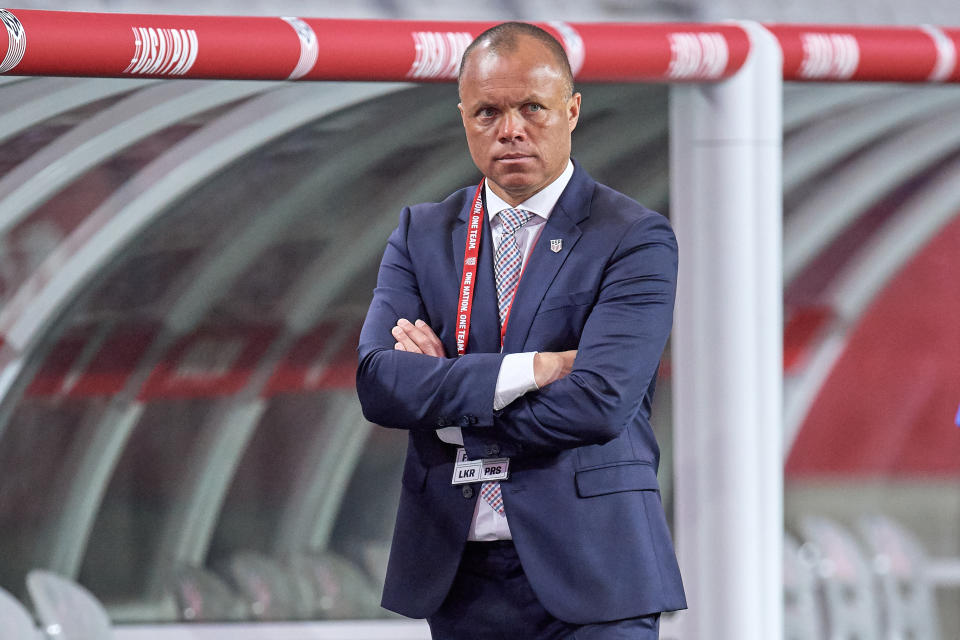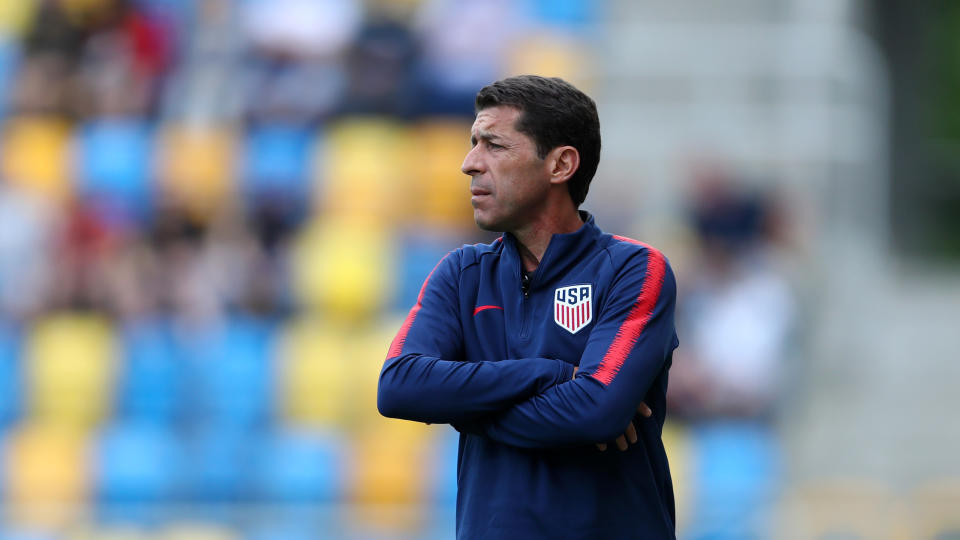U.S. Soccer defends controversial hiring policy as numerous youth coaching jobs sit vacant

CHICAGO — On the third floor of U.S. Soccer House, an old mansion that serves as the headquarters for the U.S. Soccer Federation, there’s a bunch of clustered desks in one small room with whiteboards on the walls. This is where Gregg Berhalter and the coaching staff for the U.S. men’s national do their jobs: all together, face to face, in the same room.
Not only is the coaching staff working from the same office, which is new, but the USMNT staff is in the same building as most of the federation’s employees, having casual water cooler run-ins with U.S. Soccer’s press officers, legal counsel or social media gurus.
That’s exactly how Earnie Stewart, U.S. Soccer’s first sporting director, and president Carlos Cordeiro want it. It’s the result of the federation’s new “Chicago policy,” which asks everyone to move to Chicago and work at U.S. Soccer House or risk losing their job.
“In my mind, it’s unbelievable that our coaches are not together all the time,” Stewart told a small group of reporters Friday. “It’s one thing have formal conversations with each other, and these days you can do everything by computer and wifi, but we’ve now seen with myself, Kate (Markgraf) and the coaches, when you go to the coffee machine — and I know it sounds very simple — you’re talking about soccer once again.”
For Stewart, who vows the U.S. will build a cohesive style of play across every team at every age group, it’s a necessity. But the policy has been controversial within the American soccer community since it was implemented last year.
“It's ridiculous. Absolutely ridiculous,” former USWNT coach Anson Dorrance told Soccer America this week. “Why narrow your coach hiring pool down by having all these ridiculous hurdles you have to clear?”
It may only exacerbate a problem where U.S. Soccer has more youth coach vacancies than coaches, critics say. These are the coaches responsible for developing the next players for the senior national teams, and it’s hard to build a style of play without any coaches to do it.

Only one boys national team has a coach at the moment. Some of the jobs have sat vacant for months, and the U-19 coaching position has been empty for more than two years since Brad Friedel left in November 2017. Likewise, five of seven girls national team head coaching positions are listed as vacant by U.S. Soccer, with most having no coach since early 2018.
“The one thing I still don’t understand is this concept that people don’t want to move to Chicago,” Stewart said when asked by Yahoo Sports whether he was concerned the policy could eliminate good candidates. “Maybe it’s true, maybe it’s not true — I’ve never heard it to straight to me in the conversations I’ve had.”
He later added: “I think it’s unbelievable that it’s actually a question if it’s necessary. High-performance sports is making choices. High performance is painful.”
But in the case of Dave van den Bergh, who was a youth coach at U.S. Soccer for nine years, the Chicago policy was an untenable demand. He left his job as the men’s U-20 assistant coach after being told he’d have to relocate from Texas.
“I immediately said, ‘That’s not going to happen,’” van den Bergh told the Wall Street Journal earlier this week. “First off, I don’t see the benefit, because we’re never there. There’s no field in Chicago. For six months of the year, you can’t be in Chicago because of the weather.”
The executives at U.S. Soccer are aware it’s not an ideal situation.
The nearest national training center is all the way in Kansas City, so the coaches have to leave Chicago for field work anyway. Because of the bitterly cold winters, a training center could never been built in Chicago for year-round use.
And U.S. Soccer House itself isn’t prepared for all the staff being added, either. Construction is ongoing to add more work spaces to the 1800s mansion that is registered as a historic building and can’t be fully renovated. More than likely, the U.S. Soccer Federation will have to move its headquarters, and Cordeiro admitted Friday that perhaps the edict asking everyone to move to Chicago should have been phased in more gradually.
[ Follow Yahoo Soccer on Twitter and Facebook ]
For Stewart, however, the coaches are seeing each other everyday, and they are seeing Stewart, and that is the most important thing.
“I know of no single club in the world that has success with coaches scattered all over the place,” he said. “In my view, if you really want to create an identity and style of play, you need people together to talk about it. Is it ideal that we don’t have fields outside? No, I get it, except it’s the next best thing.”
For now, Cordeiro and U.S. Soccer are preaching patience on the coaching hires.
Stewart said one new coach is clearing final paperwork hurdles, and others will be coming soon. Stewart also said he had a plan for structuring and filling the youth coaching positions that he would present to the board at its executive session, but after Saturday’s meeting he declined comment to Yahoo Sports about how those discussions went.
The hiring process itself is also new and still being refined. The addition of Stewart and Markgraf, the women’s general manager, has changed how decisions are made at U.S. Soccer and, as the 14-month process to hire Gregg Berhalter for the USMNT showed, that process is a longer one than in the past.
“You’ve got to remember that not too long ago, those positions would’ve been hired very differently,” Cordeiro said Friday in the same interview session with Stewart. “We’ve tried hard to say soccer operations will be run by soccer experts. It is a cultural change for the federation, and it is working, but we’ve got to be patient. Hiring good people is incredibly tough in whatever business you’re in, and the cost of unraveling a mistake takes months, years.”
But even if the Chicago policy doesn’t prevent U.S. Soccer from finding quality coaches, it’s up for debate whether it will be helpful or hurtful to have these coaches in one place instead of spread across a country as vast as the United States. With youth coaches often being the federation’s eyes and ears on the ground in their communities, U.S. Soccer risks losing local connections that can enhance the federation's existing scouting networks and nationwide talent ID operations.
The effect of the Chicago policy on how well youth coaches can understand the player pool remains to be seen – but U.S. Soccer’s youth coaches need to be hired first, of course.
Caitlin Murray is a contributor to Yahoo Sports and her book about the U.S. women’s national team, The National Team: The Inside Story of the Women Who Changed Soccer, is out now. Follow her on Twitter @caitlinmurr.
More from Yahoo Sports:

 generic
generic 